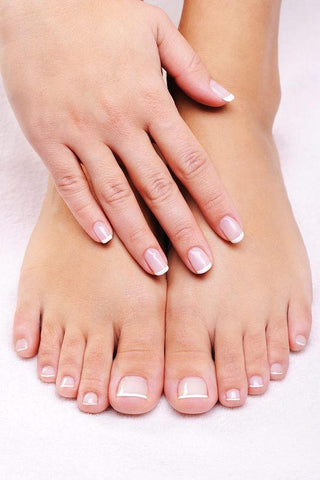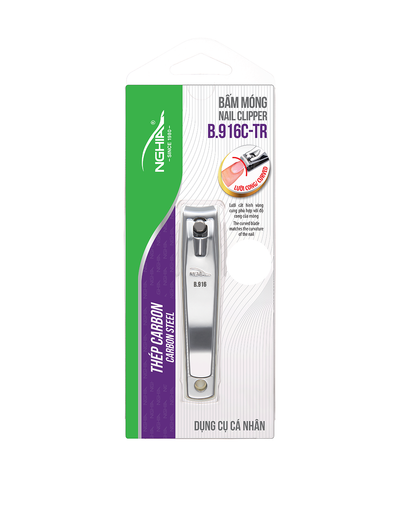Taking care of our feet is essential for overall hygiene and comfort, and one crucial aspect of foot care is proper toenail cutting. In this guide, Nghia Nippers will provide step-by-step instructions, techniques, and tips to ensure a safe and effective toenails-cutting experience.
1. Understanding toenail anatomy
As a user seeking guidance on how to cut toenails effectively, it is essential to start by understanding the anatomy of toenails. Toenails are not just mere protective coverings for our toes; they play a crucial role in maintaining the health of our feet.
1.1 Nail structure and function
Nails, including toenails, are composed of layers of a tough protein called keratin. The visible part of the nail, known as the nail plate, extends beyond the tip of the toe and has a pinkish hue due to the presence of blood vessels in the nail bed.
Beneath the nail plate lies the nail bed, which is a tissue rich in blood vessels, nerves, and melanocytes responsible for giving nails their characteristic color. The cuticle, a thin layer of skin at the base of the nail plate, serves as a protective barrier, guarding the nail matrix against infections.

Nails grow from the nail matrix, a specialized tissue beneath the cuticle, where new cells are continuously produced. As new cells form, older cells are pushed outward, contributing to the visible nail plate. Regular nail growth ensures the maintenance of healthy nails.
The primary functions of toenails include:
- Protection: Toenails shield the sensitive nail bed and surrounding tissues, safeguarding them from injuries and external forces.
- Sensation: Nails enhance our sense of touch, making it easier to pick up small objects and feel different textures.
- Gripping: Nails improve grip and dexterity, enabling us to perform various tasks with our toes.
1.2 Common toenail issues
Despite their protective nature, toenails are prone to various problems. Some common toenail issues include:
- Ingrown Toenails: Occur when the nail grows into the surrounding skin, causing pain, redness, and potential infection.
- Fungal Infections: Fungi can invade the nails, leading to discoloration, thickening, and brittleness.
- Nail Trauma: Injuries or repetitive pressure on the nails can cause nail deformities or discoloration.
- Nail Psoriasis: A skin condition that affects the nails, causing pitting, discoloration, and separation from the nail bed.
- Onychomycosis: A fungal infection that affects the toenails, leading to thickening, crumbling, and changes in nail appearance.
2. Tools and equipment for cutting toenail
Having the right tools and equipment is essential for an effective toenail-cutting experience. Proper tools not only ensure precision but also contribute to maintaining the health of your nails and surrounding skin.

2.1 Essential cutting tools
- Nail Clippers: Nail clippers are the most common and convenient tool for cutting toenails. They come in various sizes and styles, including straight-edge and curved-edge clippers, catering to different nail shapes and preferences.
- Nail Scissors: Nail scissors offer more control for precise trimming, making them suitable for individuals with thicker or ingrown toenails. They are especially useful for shaping nails and removing hangnails.
- Nail Nippers: Nail nippers have a powerful cutting mechanism, ideal for thick, tough toenails that may be difficult to trim with regular clippers. They are especially helpful for individuals with nail deformities.
- Emery Board or Nail File: An emery board or nail file is used to smooth the edges of freshly cut nails, preventing sharp edges that can cause discomfort or snag on clothing.
2.2 Selecting the right tools
Choosing the appropriate cutting tools depends on individual needs and nail conditions. Consider the following factors when selecting the right tools:
- Nail Thickness: For thicker nails, nail nippers or sturdy clippers are more suitable, while standard clippers work well for thinner nails.
- Nail Shape: Curved-edge clippers or scissors may be better for individuals with curved or ingrown toenails, as they can help avoid injury.
- Personal Preference: Some people may find clippers more comfortable to use, while others prefer the precision offered by scissors.

2.3 Importance of sterilization
Before using any cutting tools, it is crucial to ensure they are properly sterilized to prevent infections and complications. Sterilization eliminates harmful bacteria and germs that can enter the open nail area during the cutting process.
To sterilize your toenail cutting tools:
- Wash the tools with warm, soapy water to remove debris and dirt.
- Disinfect the tools using rubbing alcohol or a solution of equal parts water and hydrogen peroxide.
- Allow the tools to air dry completely before use.
Regularly sterilizing your cutting tools after each use will maintain a safe and hygienic toenail cutting environment.
3. Step-by-step guide on how to cut toenails
Now comes the practical part – a detailed step-by-step guide on how to cut your toenails correctly. Starting from prepping the toenails to the actual cutting techniques, we will walk you through each stage to guarantee a precise and safe trimming process.
3.1 Prepping the toenails
Start by soaking your feet in warm, soapy water for about 5-10 minutes. This softens the nails, making them easier to trim, and reduces the risk of splintering. Gently clean the nails and surrounding skin with a soft brush or cloth to remove any dirt or debris.
3.2 Selecting the desired length
After prepping, pat your feet dry with a towel. Examine your toenails and decide on the desired nail length. Toenails should ideally extend just beyond the tips of your toes, but avoid cutting them too short to prevent ingrown nails.

3.3 Cutting techniques for toenails
- Choose the appropriate cutting tool based on your nail thickness and shape. Nail clippers work well for most nails, while scissors or nippers are better for thicker or ingrown nails.
- Hold the cutting tool comfortably between your thumb and fingers, ensuring a firm grip and proper control.
- Trim the toenails straight across to prevent ingrown nails. Avoid rounding the edges, as it can lead to painful nails.
4. Tips for cutting toenails
4.1 Proper nail filing techniques
Nail filing is an essential step in toenail care, and doing it correctly helps achieve a polished finish and maintains nail health. Follow these detailed techniques for effective nail filing:
- Choose the Right File: Select a fine-grit emery board or nail file. A file with a higher grit number (180 or above) is ideal for gently shaping and smoothing toenails.
- File in One Direction: Avoid using a back-and-forth sawing motion, as it can weaken and damage the nails. Instead, file in one direction from the sides of the nail toward the center. This technique prevents splitting and peeling of the nails.
- Follow the Nail Shape: Work with the natural shape of your toenails. If you prefer rounded nails, file the edges in a gentle curve. For square nails, file the edges straight across with slightly rounded corners.
- Be Gentle: Apply gentle pressure while filing to prevent excessive heat and friction, which can cause nail damage. A light touch is sufficient to shape and smooth the nails effectively.

4.2 Maintaining nail shape
Keeping the desired nail shape enhances their appearance and reduces the risk of snagging. Follow these tips to maintain nail shape:
- Regular Trimming: Trim your toenails regularly, about once every two to three weeks, to maintain their length and shape. Regular maintenance prevents overgrowth and minimizes the risk of snagging or breakage.
- Use the Right Tools: Choose appropriate cutting tools that align with your preferred nail shape. Nail clippers or scissors with specific shape guides can help achieve the desired look with precision.
- Avoid Abrupt Changes: When reshaping your nails, do so gradually to avoid sudden changes in length or shape. Abruptly altering the nail shape can lead to nail weakening and breakage.
4.3 Preventing common issues
To prevent common toenail problems, incorporate these practices into your foot care routine:
- Wear Proper Footwear: Choose shoes that fit properly and provide enough room for your toes. Tight footwear can exert pressure on the toenails, leading to discomfort and potential nail problems.
- Practice Good Hygiene: Keep your feet clean and dry, especially after activities that cause excessive sweating. Moisture can create an environment for fungal infections to thrive.
- Moisturize Regularly: Apply moisturizer to your feet and nails to prevent dryness and brittleness. Well-hydrated nails are less likely to crack or split.
4.4 Signs requiring medical attention
If you notice any of the following signs, consult a healthcare professional for appropriate diagnosis and treatment:
- Wear Proper Footwear: Choose shoes that fit properly and provide enough room for your toes. Tight footwear can exert pressure on the toenails, leading to discomfort and potential nail problems.
- Practice Good Hygiene: Keep your feet clean and dry, especially after activities that cause excessive sweating. Moisture can create an environment for fungal infections to thrive.
- Moisturize Regularly: Apply moisturizer to your feet and nails to prevent dryness and brittleness. Well-hydrated nails are less likely to crack or split.













